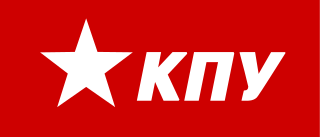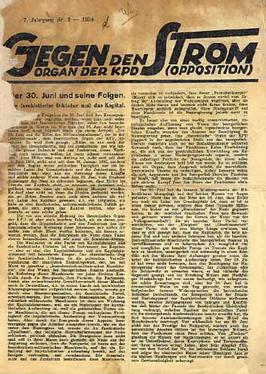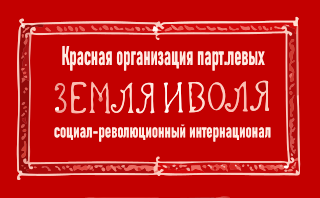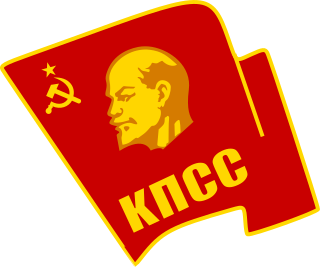Related Research Articles

The politics of Belarus takes place in a framework of a presidential republic with a bicameral parliament. The President of Belarus is the head of state. Executive power is nominally exercised by the government, at its top sits a ceremonial prime minister, appointed directly by the President. Legislative power is de jure vested in the bicameral parliament, the National Assembly, however the president may enact decrees that are executed the same way as laws, for undisputed time.
The ten years 1917–1927 saw a radical transformation of the Russian Empire into a socialist state, the Soviet Union. Soviet Russia covers 1917–1922 and Soviet Union covers the years 1922 to 1991. After the Russian Civil War (1917–1923), the Bolsheviks took control. They were dedicated to a version of Marxism developed by Vladimir Lenin. It promised the workers would rise, destroy capitalism, and create a socialist society under the leadership of the Communist Party of the Soviet Union. The awkward problem, regarding Marxist revolutionary theory, was the small proletariat, in an overwhelmingly peasant society with limited industry and a very small middle class. Following the February Revolution in 1917 that deposed Nicholas II of Russia, a short-lived provisional government gave way to Bolsheviks in the October Revolution. The Bolshevik Party was renamed the Russian Communist Party (RCP).

The Communist Party of Canada is a federal political party in Canada. Founded in 1921 under conditions of illegality, it is the second oldest active political party in Canada, after the Liberal Party of Canada. Although it does not currently have any parliamentary representation, the party's candidates have previously been elected to the House of Commons, the Ontario legislature, the Manitoba legislature, and various municipal governments across the country.

The Communist Party of Ukraine is a banned political party in Ukraine. It was founded in 1993 and claimed to be the successor to the Soviet-era Communist Party of Ukraine, which had been banned in 1991. In 2002 it held a "unification" congress when both "old and new" parties merged. The party is a member of the Moscow-based Union of Communist Parties, an umbrella organisation for all communist parties of the former Soviet Union. The party has been led by Petro Symonenko since it was founded.

The Socialist Party of Ukraine was a social democratic and democratic socialist political party in Ukraine. It was one of the oldest parties in Ukraine and was created by former members of the Soviet-era Communist Party of Ukraine in late 1991, when the Communist Party was banned.
The Right Opposition or Right Tendency in the All-Union Communist Party (Bolsheviks) was a label formulated by Joseph Stalin in autumn of 1928 for the opposition against certain measures included within the first five-year plan, an opposition which was led by Nikolai Bukharin, Alexei Rykov, Mikhail Tomsky, and their supporters within the Soviet Union that did not follow the so-called "general line of the party". It is also the name given to "right-wing" critics within the Communist movement internationally, particularly those who coalesced in the International Communist Opposition, regardless of whether they identified with Bukharin and Rykov.

The Communist Party of Germany (Opposition) (German: Kommunistische Partei Deutschlands (Opposition)), generally abbreviated as KPO or KPD(O), was a communist opposition organisation established at the end of 1928 and maintaining its existence until 1939 or 1940. After the rise of Adolf Hitler and the Nazi Party to power in January 1933, the KPO existed only as an illegal and underground organization. The group initially sought to modify, later to replace, the mainstream Communist Party of Germany (KPD) headed by Ernst Thälmann. The KPO was the first national section affiliated to the International Communist Opposition (ICO).
The history of the Communist Party of the Soviet Union was generally perceived as covering that of the Bolshevik faction of the Russian Social Democratic Labour Party from which it evolved. In 1912, the party formally split, and the predecessor to the Communist Party of the Soviet Union became a distinct entity. Its history since then can roughly be divided into the following periods:

Demokratizatsiya was a slogan introduced by CPSU General Secretary Mikhail Gorbachev in January 1987 calling for the infusion of "democratic" elements into the Soviet Union's single-party government. Gorbachev's Demokratizatsiya meant the introduction of multi-candidate—though not multi-party—elections for local Communist Party (CPSU) officials and Soviets. In this way, he hoped to rejuvenate the party with reform-minded personnel who would carry out his institutional and policy reforms. The CPSU would retain sole custody of the ballot box.

The 10th Congress of the Russian Communist Party (Bolsheviks) was held during March 8–16, 1921 in Moscow, Russia. The congress dealt with the issues of the party opposition, the New Economic Policy, and the Kronstadt rebellion, which started halfway through the Congress. The Congress was attended by 694 voting delegates and 296 non-voting delegates.

General elections were held in Romania on 19 November 1946, in the aftermath of World War II. The official results gave a victory to the Bloc of Democratic Parties, together with its associates, the Hungarian People's Union and the Democratic Peasants' Party–Lupu. The elections marked a decisive step towards the disestablishment of the Romanian monarchy and the proclamation of a Communist regime at the end of the following year. Breaking with the traditional universal male suffrage confirmed by the 1923 Constitution, it was the first national election to feature women's suffrage, and the first to allow active public officials and army personnel the right to vote. The BPD, representing the incumbent leftist government formed around Prime Minister Petru Groza, was an electoral alliance comprising the PCR, the Social Democratic Party (PSD), the Ploughmen's Front, the National Liberal Party–Tătărescu (PNL–Tătărescu), the National Peasants' Party–Alexandrescu (PNȚ–Alexandrescu) and the National Popular Party.

The 14th Congress of the All-Union Communist Party (Bolsheviks) was held during 18–31 December 1925 in Moscow. The congress elected the 14th Central Committee. The congress is best remembered for its declaration of intent to pursue rapid industrialisation of the Soviet Union rather than seeking lasting accommodation as an agricultural producer within the international system of capitalist world economy. It also marked the victory of the majority faction of Joseph Stalin and Nikolai Bukharin over the "New Opposition" headed by Grigory Zinoviev and Lev Kamenev.

The 15th Congress of the All-Union Communist Party (Bolsheviks) was held during 2–19 December 1927 in Moscow. It was attended by 898 delegates with a casting vote and 771 with a consultative vote. The congress ended an inner-party struggle, as Leon Trotsky, Gregorii Zinoviev and other opponents of Joseph Stalin were expelled from the party.

The electoral system of the Soviet Union was varying over time, being based upon Chapter XIII of the provisional Fundamental Law of 1922, articles 9 and 10 of the 1924 Constitution and Chapter XI of the 1936 Constitution, with the electoral laws enacted in conformity with those. The Constitution and laws applied to elections in all Soviets, from the Supreme Soviet of the Soviet Union, the Union republics and autonomous republics, through to regions, districts and towns. Voting was claimed to be secret and direct with universal suffrage. However, in practice, between 1936 and 1989, voters could vote against candidates preselected by the Communist Party only by spoiling their ballots, or by voting against the only candidate, whereas votes for the party candidates could be cast simply by submitting a blank ballot. A person would be given a ballot by a clerk, and could immediately walk to the ballot box, and while there were booths in which one could strike the candidates they voted against off the ballot, this was easy to record and was not commonly done by voters.
Democratic Russia was the generic name for several political entities that played a transformative role in Russia's transition from Communist rule. In 1991–1993, the Democratic Russia Movement was the largest political organization in the country and Boris Yeltsin's base of political support.

The All-Russian Congress of Soviets evolved from 1917 to become the supreme governing body of the Russian Soviet Federative Socialist Republic from 1918 until 1936, effectively. The 1918 Constitution of the Russian SFSR mandated that Congress shall convene at least twice a year, with the duties of defining the principles of the Soviet Constitution and ratifying peace treaties. The October Revolution ousted the provisional government of 1917, making the Congress of Soviets the sole, and supreme governing body. This Congress was not the same as the Congress of Soviets of the Soviet Union which governed the whole Soviet Union after its creation in 1922.

The Communist Party of the Russian Federation is a communist political party in Russia that officially adheres to Marxist–Leninist philosophy. It is the second-largest political party in Russia after United Russia. The youth organisation of the party is the Leninist Young Communist League.

The Party of Left Socialist-Revolutionaries-Internationalists was a revolutionary socialist political party formed during the Russian Revolution.

The Political Bureau of the Central Committee of the Communist Party of the Soviet Union, abbreviated Politbureau CC CPSS or simply Politbureau, was the highest political body of the Central Committee of the Communist Party of the Soviet Union and de facto a collective presidency of the USSR. It was founded in October 1917, and refounded in March 1919, at the 8th Congress of the Bolshevik Party. It was known as the Presidium from 1952 to 1966. The Politburo's authority was significantly undermined during the August coup and subsequently ended three months later upon its dissolution in 1991.
Legislative elections were held in the Soviet Union in April 1927 to elect members of the Congress of Soviets, having originally been scheduled for 1 January. H. N. Brailsford, in his book, How the Soviets Work, he described how the elections work:
"A General Election was going on in Russia during my stay this year. Save for the reports in the news-papers, one would hardly have suspected it...There is no organization which could compile any alternative list of candidates, and if by mischance this were to happen in one electoral area, there could be no arrangement...No large issues of policy are ever settled at a Soviet election...The business of an election is rather to choose persons who will carry out the day to day work of administration. The entire structure of the Soviet system lends itself naturally to this limitation...The town and village Soviets, which are directly elected, are municipal authorities whose range of action and methods of work do not greatly differ from those of municipal bodies elsewhere...The atmosphere of a Soviet Election in Moscow is, accordingly, rather nearer to that of an English municipal election than to that of a Parliamentary General Election....The atmosphere of the election and, indeed, of debates in the Soviets themselves, is strangely remote from "politics" as Western democracies conceive them. A big family, animated by a single purpose, sits down on these occasions to administer its common property...The final stage in a Russian Election is the general meeting which adopts the candidates and gives them their mandates...I think that in any event unanimity would have been attained, which, indeed, is the purpose of elections in Russia."
References
- Fitzpatrick, Sheila. 1999. Everyday Stalinism: Ordinary Life in Extraordinary Times: Soviet Russia in the 1930s. New York: Oxford University Press, pp. 180–182.